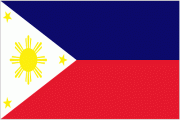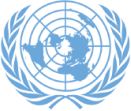Good afternoon.
The theme of the 57th session of the Commission for Social Development "Addressing inequalities and challenges through fiscal, wage and social protection policies" is very important as it is timely. For the Philippines, this theme is reflected our dual socio-economic development mandate: to sustain and protect a high rate of growth while ensuring that no one is left behind.
In this regard, we have embarked on an ambitious infrastructure program such that by 2022, infrastructure spending amounts to 7% of GDP. This infrastructure program will not only boost growth but also mitigate the effects of calamities. At the same time, we are increasing government spending on social services: education, health, and social protection. Financing this entails fiscal reforms, both in policy and administration, to increase tax effort from 14% to 17%. One third of the marginal increase in tax effort will be for infrastructure development, while the other third, for social services.
In a way, our infrastructure drive validates the findings of the World Bank[1] that the Philippines needs both more capital and improved productivity to sustain a high level of growth and reduce poverty incidence which is still at 21.6%. Our aim is to reduce poverty incidence to 14% by the end of 2022.
Productivity will be improved by greater competition in the market and better trade and investment policies and regulations. A higher level of productivity is a market-based approach to poverty reduction and inclusive development. To enhance this productivity, we are investing in our people: health, education, and social protection.
On education, we have enshrined it in our Constitution that the budget for the education should always be greater than that of the military. And we have been investing in schools, even pursing public-private partnerships for the construction of school buildings. Recently, we have implemented the K-12 educational system.
Budget for health is also enhanced with additional funding from sin taxes which we reformed in 2012. Currently, sin tax collections amount to 1.1% of GDP. These additional resources are helping us march forward in attaining universal health care (UHC). In Congress, we are making the case for additional sin taxes to fund UHC.
We have been advocating for the proper use of fiscal instruments in addressing issues. On the one hand, we have recently passed the first package of tax reforms aimed at flattening and broadening the tax system. On the other hand, we are using the expenditure arm of fiscal policy such as cash transfers, conditional and unconditional, to lift the living conditions of those at the bottom of the economic pyramid. The conditional cash transfers have been instrumental in reducing poverty rate from 25.2% in 2012 to 21.6% in 2015.
In pursuing inclusive development, we recognized the important role of the private sector. This is a radical turnaround for fiscal policy. Government did involve itself in direct lending to micro-, small, and medium enterprises in the 1970s and 1980s, with the lending portfolio amounting to as much as 2% of GDP in the 1990s. But Government did not have the expertise for risk management. So we tapped the government banks and invited the private sector. The role of government, thus, has evolved from being an active player to that of a referee--policy maker and regulator--and a cheerer. It is the private sector that has assumed the role of an active player.
Aside from increasing incomes, there is the need to protect life, livelihood, and homes. With consultations with various stakeholders and with the help of development partners, we were able to come up with a National Strategy for Microinsurance in 2010. No sooner did we roll out the Strategy did the regulators issued the Regulatory Framework for Microinsurance, considered the first microinsurance framework in the world. The regulatory framework envisions an insurance market readily accessible to the informal and low-income sectors made possible through the availability of microinsurance characterized by low premiums, understandable contracts, and simple products with a maximum 10-day claims payment provision. The contract document is single-page, can be bought from pawnshops and other outlets, and may be given as gift to another. The microinsurance initiative was complemented with financial education, training and advocacy campaigns coupled with the introduction of an alternative dispute resolution mechanism to avoid costly legal battles in case of disputes.
In 2013, Taiphoon Haiyan, considered the strongest typhoon in recorded history, struck the Philippines. In the aftermath of the disaster, more than 100,000 micro-insurance claims, averaging US$100 per claim, have been paid out immediately. These claims were instrumental in rebuilding the lives of survivors. To date, about a third of the Philippine population is covered with micro-insurance.
There are several things that we learned from our experiences in inclusive development. The first is the need for dialogue among stakeholders. Equally important as the inclusivity of outcome is the inclusivity of the process. In the case of microinsurance, the process in crafting the regulations was transparent and inclusive such that stakeholders have meaningful ownership of those rules and regulations.
The second important lesson is the need for collaboration not only in the consultation phases but also in the implementation. In the case of microinsurance, we have enlisted the help of local governments even at the village level especially in far flung-areas to ensure the timely payment of claims.
Another very important lesson is the need for scaling up, enhancement, and sustainability of our various initiatives. Microinsurance covered around 2% of the population in 2008; now, the coverage is about one-third. Microinsurance products already include health insurance and agricultural microinsurance is gaining traction.
Lastly, we may have to redefine our roles. With this, fiscal policy would have to be used with utmost care as regards meeting inclusive developmental goals. There are instances where government may have to step in, such as in the case of cash transfers and the provision of infrastructure and social services. And there are cases where the private sector can perform a more efficient and sustainable role as in the case of microfinance and microinsurance.
[1] World Bank [2018] Growth and Productivity in the Philippines: Winning the Future


